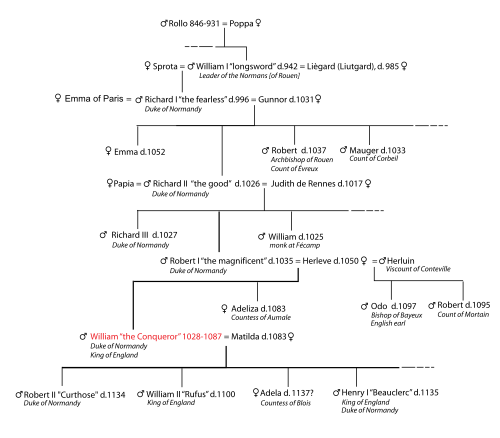
Back Eorl of Normandige ANG دوق نورماندي Arabic Duged Normandi Breton Duc de Normandia Catalan Normanniske hertugrække Danish Herzog der Normandie German Δούκας της Νορμανδίας Greek Duque de Normandía Spanish دوک نورماندی Persian Duc de Normandie French

In the Middle Ages, the duke of Normandy was the ruler of the Duchy of Normandy in north-western France. The duchy arose out of a grant of land to the Viking leader Rollo by the French king Charles the Simple in 911. In 924 and again in 933, Normandy was expanded by royal grant. Rollo's male-line descendants continued to rule it until 1135, and cognatic descendants ruled it until 1204. In 1202 the French king Philip II declared Normandy a forfeited fief and by 1204 his army had conquered it. It remained a French royal province thereafter, still called the Duchy of Normandy, but only occasionally granted to a duke of the royal house as an appanage.
Despite both the 13th century loss of mainland Normandy, the renunciation of the title by Henry III of England in the Treaty of Paris (1259),[1] and the extinction of the duchy itself in modern-day, republican France, in the Channel Islands the monarch of the United Kingdom is regardless still often informally referred to by the title "Duke of Normandy". This is the title used whether the monarch is a king or a queen.
- ^ "The historical background and the 'Lands of the Normans'". The Digital Humanities Institute. University of Sheffield.